Caring by Design: Stamps MDes in Integrative Design Thesis Projects
If you've ever spent time in a hospital, you can probably relate to this scenario: your procedure is done, you're rested, and it's time to go home. Or is it? And what still needs to happen first?
The answer likely depends on who you ask, and even then results can be inconclusive. While hospital staff may be working hard to get you discharged, as a patient waiting alone in a room, it's easy to feel lost in the shuffle.
Ji Youn Shin (MDes ’17) says patients are often left skimming pamphlets and repeating answers to the same questions from different hospital staff. The recent Stamps MDes graduate thinks there's a better way to keep patients and staff informed.
"Patients have limited access to information or facts, while clinicians have different communication artifacts, like computers and pagers and phones," she says. "Patients only have a nurse call button."

Shin and her colleagues in the first graduating cohort from the Stamps MDes in Integrative Design program have thought a lot about issues like these. The group spent the last 18 months researching and addressing health care transitions from a design perspective.
Founded in 2015, the two-year program focuses on design processes and asks students to take on complex, ongoing societal problems — "wicked problems" in planning speak — by working with professional partners in the field.
After a semester-long campus- and community-wide search for the right partner, the group began work with the then new Integrated Michigan Patient-Centered Alliance in Care Transitions (I-MPACT), a first-of-its-kind patient-focused Blue Cross and Blue Shield of Michigan collaborative comprised of physicians, hospitals, providers, patients, and caregivers, late in 2015.
Elizabeth Vander Veen (MDes ’17) says the project hit all the main points the cohort was looking for — multiple perspectives and needs, scalability, and potential for lasting impact. And since it was so new, the group played an active role in how all this was done from the start.
"We’ve been on the I-MPACT project team from the near start," Vander Veen says. "We came on before the program manager, the quality improvement specialist, the QI nurse coordinator, and current directors."
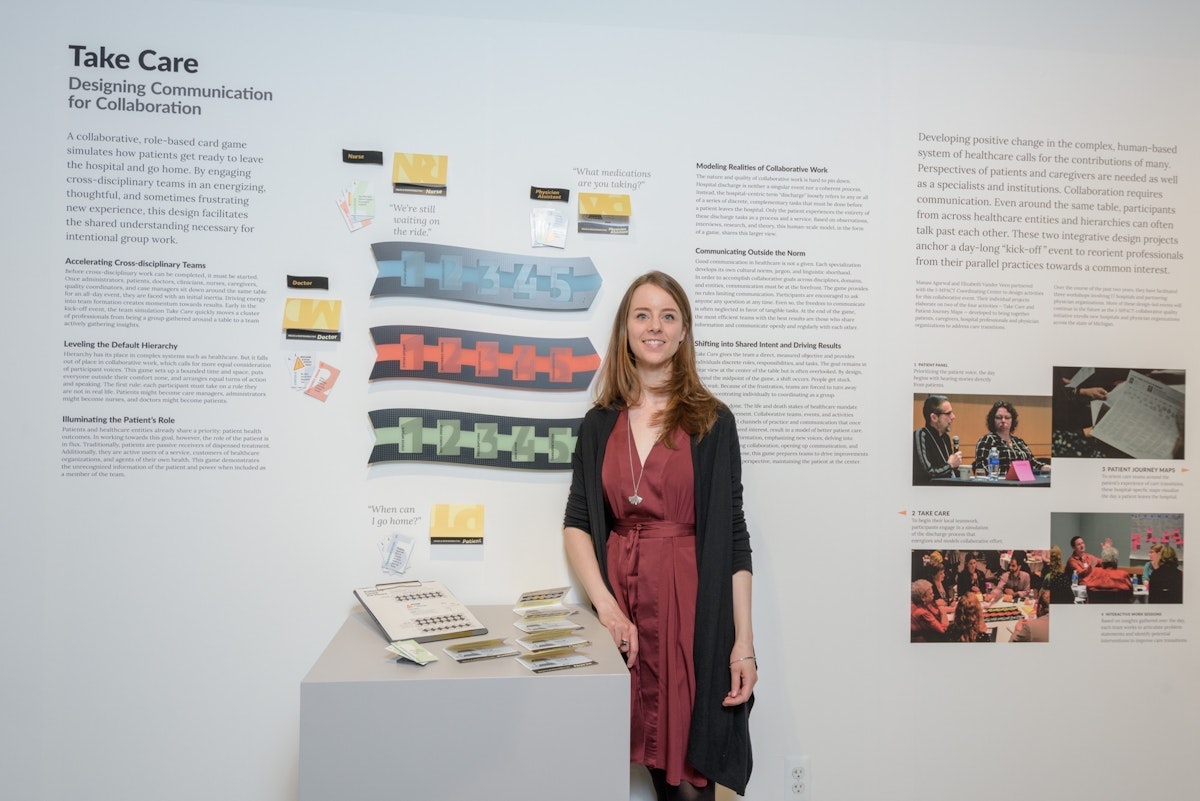
Care transitions can be thought of as whenever a patient moves from one location of care to another. That could be from the hospital to a nursing facility or from the hospital to home or even from another facility back to the hospital. Whenever this happens, Vander Veen says things fall through the cracks, and there are a lot of unknowns, especially after patients go home.
To get started, the cohort worked with local hospitals, clinicians, and patients to review what happens the day a patient is discharged. They conducted interviews, shadowed doctors and nurses, and even observed consenting patients.
"Discharge itself is very hospital-centric," Vander Veen says. "You're just discharging the patient out of the hospital. Why isn't it called ‘getting ready for the next step’ or ‘getting ready to go home’?"
As designers, the candidates were particularly sensitive to the environment and bringing the patient experience to the forefront.
"We tried to find discharge, or this discharge process," Vander Veen says. "It was very elusive, and we didn't really find it. There isn't really a process."
For patients, however, it feels like a process, just not a very good one. And there's lots of waiting. On her first day of observations, Aditi Bidkar (MDes ’17) sat with a patient who waited an entire day to be discharged, but it didn't happen.
"In these sets of observations, I saw a huge disappointment," she says.
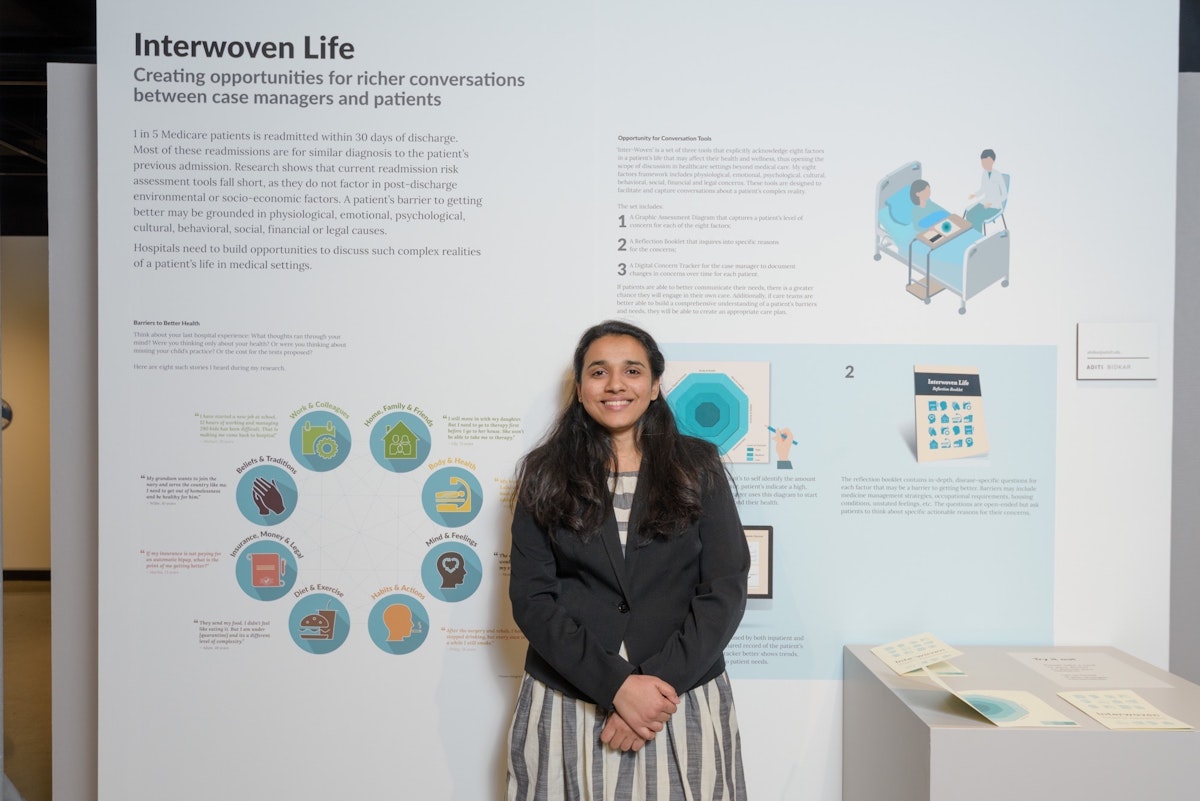
One of the clinicians the students worked with early on was Dr. David Bozaan with Michigan Medicine, who agreed to host them for a day of observations. While he notes care transitions aren't a newly recognized problem, Bozaan saw a lot of value in the students' approach and eventually became advisor for three of the candidate's graduate thesis projects.
"We in healthcare can be somewhat narrow focused through our healthcare lens," he says. "We may not see the problem because of our somewhat biased experience in the same light maybe a design a team would see the problem," Bozaan says.
From their initial findings, the cohort organized an I-MPACT kickoff program hosted at the MDes studio in spring 2016. The event brought together different hospitals, physicians, and patients to better understand care transitions from a holistic perspective and walk away with some interventions to implement over the summer.
Kai Yu (MDes ’17) says the event's success could be attributed to the hours the cohort put in getting to know their audience.
"Since we want to be integrative designers, the most important foundation is you need to talk other people's language," he says. "This language is learned by the context of research, by our experience in the field, by all the key findings we collected from interviews and observations."
Since that first kickoff, Vander Veen and Manasi Agarwal (MDes ’17) continued to work with I-MPACT as interns and helped facilitate additional kickoffs, where they introduced new components, like an introductory game simulating the discharge process and journey maps to help participants visualize the discharge process from start to finish.
"When we had held the first kickoff, we didn't have a journey map as such, but we were asking them to map out a journey from their understanding, and it was very fragmented," Agarwal says. "People just knew their portion of the discharge process."
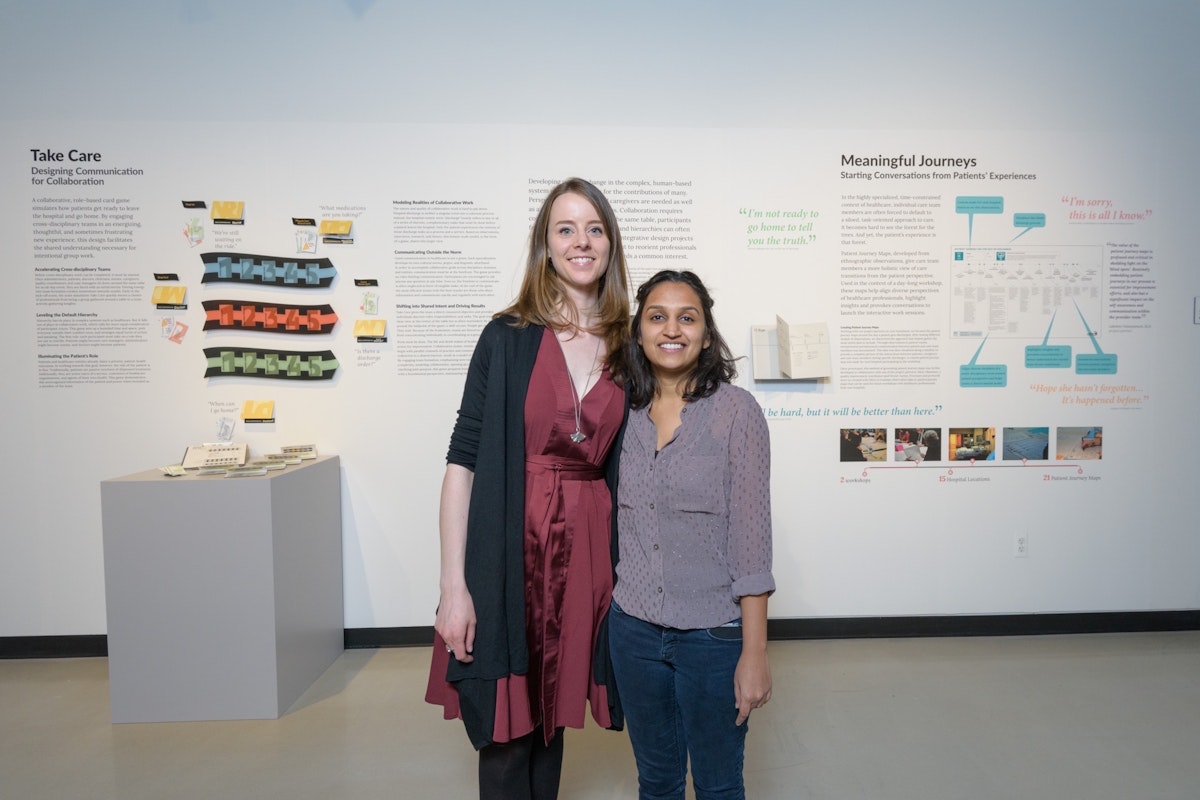
While Vander Veen and Agarwal helped systematize the group's findings into replicable processes that are now part of I-MPACT, their classmates pursued individual thesis projects aimed at improving communications during and around care transitions.
Kuan-Ting Ho (MDes ’17) focused his work on ways to improve information sharing between doctors and nurses that allows for handwritten notes and electronic health record systems to be used more effectively side-by-side through use of a software application he designed.
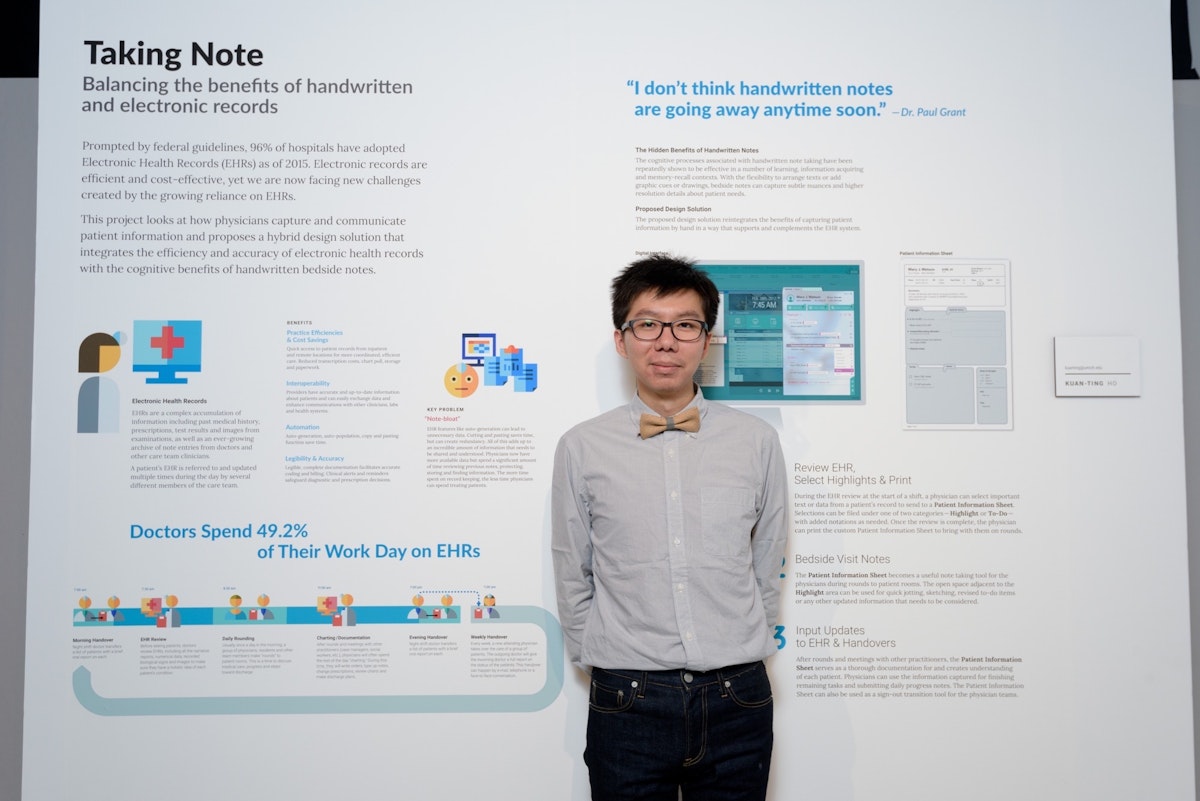
Ji Youn Shin's research on patient-clinician communications led her to design a tablet-based platform that patients can use to enter relevant information about themselves just once and also retrieve information about their stay and where they are at in the process.
As her thesis advisor, Bozaan says Shin's project helps solve the problem of keeping patients in the loop on just how much work goes into getting them discharged.
"A lot of what's happening is completely invisible to the patient, and that work was really designed to make the invisible work more visible," he says.
After graduating, Shin plans to further develop her study, which recently received Institutional Review Board approval for testing in hospitals. Shin will also work with physicians at C.S. Mott Children's Hospital as a design researcher to develop a platform for children with leukemia.
Not all of the MDes graduates plan to continue in health care (more than one expressed interest in working in education or food systems), but the skills and methodology learned over the last two years should prepare them for leadership positions with organizations and corporations that understand the value of visualizing what could be rather than what has been.
"A lot of processes and points of view are very linear, but as designers, we are in a very comfortable space when we see ambiguity," Bidkar says. "We kind of actually savor it in a way."
After working with the cohort for the last several months, Bozaan says adding a designer to Michigan Medicine’s own Quality Improvement team would make an immediate impact, and he sees that going well beyond healthcare.
"Other technical fields have that same space for designers," Bozaan says. "I think their approach to the problem is somewhat different than the approach we traditionally take in, and I think it's tremendously valuable."
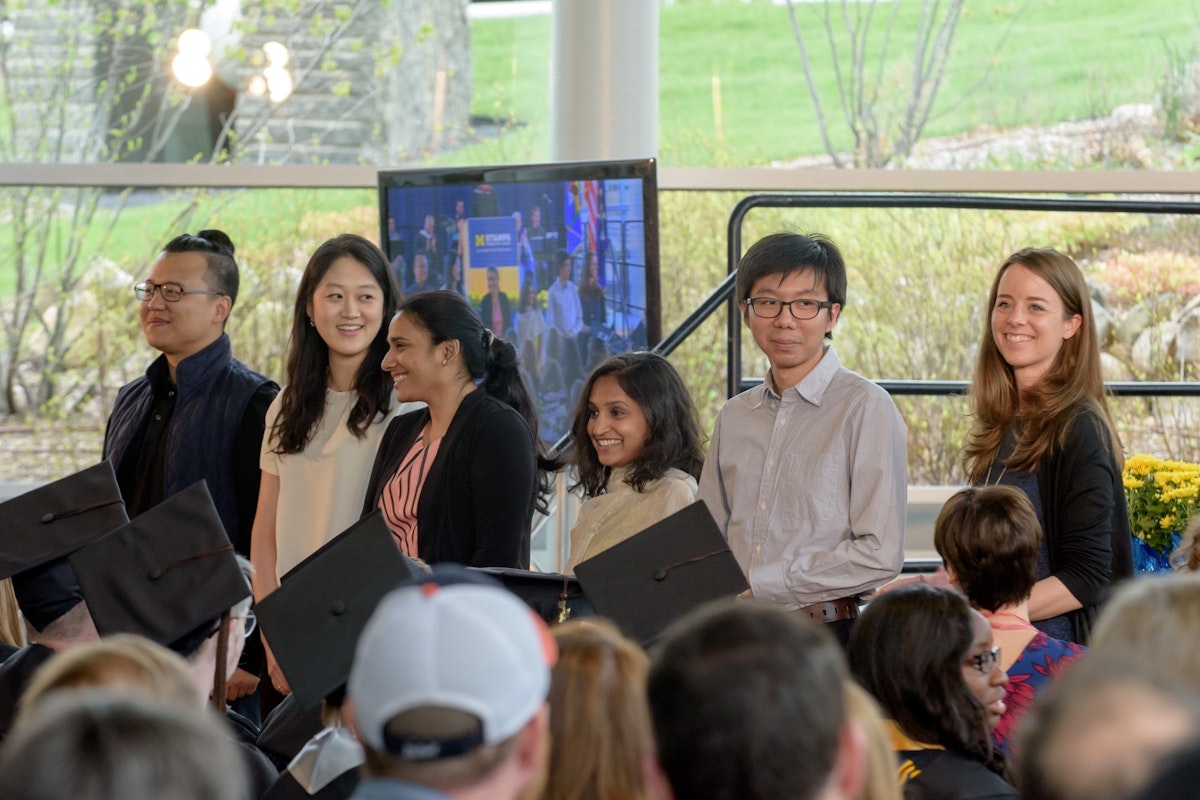
Story by Eric Gallippo.